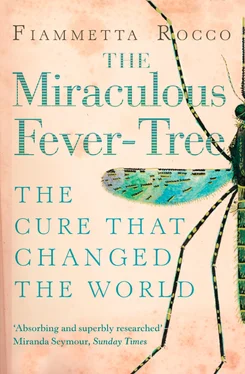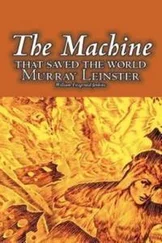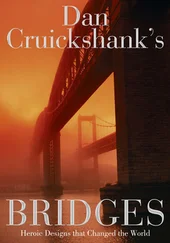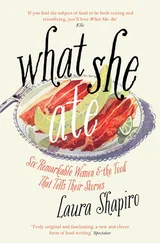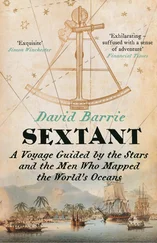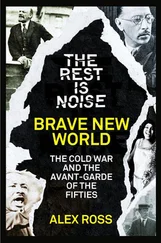In Marseilles they boarded the SS Usambara , a passenger ship of the Deutsch Öst Afrika line that would bear them across the Mediterranean to Port Said, through the Suez Canal, and down the East African coast to Mombasa. From there, the plan was to travel by train and on foot across Africa’s thick equatorial waistline to the heart of the continent. They thought they would be away for at least a year. Longer, perhaps.
My grandparents were accompanied by a sizeable quantity of luggage. To equip themselves for a hunting trip that would take them as far west as the Ituri forest on the banks of the Congo river, they had paid a visit to Brussels, to the emporium of Monsieur Gaston Bennet, a specialist colonial outfitter who sold ready-prepared safari kits with everything a traveller might need for a journey of three, six or even nine months.
Monsieur Bennet’s inventory sounds much like the necessities that H. Rider Haggard’s hero Alan Quartermain packed when he set off in search of King Solomon’s Mines. For their extra-long hunting trip, he sold my grandparents four heavy-calibre rifles, including a double-barrelled Gibbs .500 which my grandfather Mario, with manly Neapolitan excitement, described in his diary as ‘una vera arma’ – a real weapon – and a .408 Winchester for my grandmother Giselle, who hoped to shoot an elephant. Eight months later she killed a lone male; its tusks soared high above her head when it lay dead on its side. She allowed herself to be photographed alongside the beast, leaning heavily on the barrel of her rifle as if it were a staff. But the truth is that she felt a little sick at what she had done. Killing the elephant unnerved her. She was five months pregnant at the time, which may have made her especially sensitive. She never shot an animal again.
As well as the rifles, my grandparents were outfitted with two pairs of shotguns, a twelve-bore and a lady’s twenty-bore; five hundred kilos of ammunition in watertight boxes; six trunks of tropical clothing; twelve cases of brandy; eight of books; a typewriter; a gramophone with my grandfather’s favourite record, ‘My Cutie’s Due at Two-to-Two Today’; coloured beads for gifts; and enough sketchpads, pastels and modelling clay to last them a whole year—my grandfather was a painter and my grandmother a sculptress. Their effects were packed into tin trunks weighing not more than twenty-five kilos each, the maximum that would be carried by an African porter. Giselle stood barely an inch over five feet and always wore a turban, which had the effect of both hiding her incipient baldness and making her seem taller than she really was. When my grandparents reached the Ituri forest she unpacked her clay and set about modelling a local Tutsi chief who towered nearly two feet above her. He watched her as she worked, his face impassive. He said nothing, but his children danced around and called her ‘Potipot’, she who works with clay.
In addition to the safety precautions of heavy Damascus-barrelled guns and several changes of boots, Monsieur Bennet packed my grandparents a sizeable medicine chest that was manufactured from black metal and lined with marbled endpapers to absorb any moisture and keep its contents safe from ants. In it he placed gauze bandages and sutures, several bottles of Dr Collis Brown’s Elixir, a concoction made of morphine, cannabis and treacle that had been invented in 1856 and was recommended for treating diarrhoea, boric acid for the eyes, carbolic acid against lion and leopard scratches, Epsom salts and castor oil for constipation, and a brown goo called Castellani’s Paint to fight skin fungi. There were also twenty-four sets of steel syringes and needles, each packed in a small metal box with a tight lid for easy boiling, the best method of sterilisation in the bush. No medicine chest bound for Africa was complete without a supply of purple crystals of permanganate of potash, for washing raw vegetables and cleaning out snakebite wounds. With it came a snakebite pencil which you used to cut a Y-shaped incision, so you could lift the skin immediately surrounding the bite and pack it with permanganate.
Snakes are highly sensitive to vibration, and most of them will slither away when they detect you approaching. Mosquitoes, on the other hand, do not. Among the most important items in Monsieur Bennet’s medicine chest was packet after packet of powdered sulphate of quinine, to guard against malaria. Alan Quartermain packed an ounce of quinine and one or two small surgical instruments into his bag for the final assault on King Solomon’s Mines. He would not have left home without it. ‘This was our total equipment, a small one indeed for such a venture,’ he wrote. ‘Try as we would we could not see our way to reducing it. There was nothing but what was absolutely necessary.’
From Mombasa Mario and Giselle headed west towards their first stop, Voi, a railway junction halfway between Mombasa and Nairobi. The land was flat and scrubby, with occasionally a mound of hills rising in a greeny-purple haze in the far distance. They saw Masai herders with thin, high-boned cattle that were oblivious to the sun’s heat. Dried-out umbrella thorns provided the only shade, and a patchy shade at that. Shortly after Voi they made a detour south across the border with Tanganyika to try to get a better view of Mount Kilimanjaro, Africa’s highest peak. They passed the spot where General von Lettow-Vorbeck, the German soldier-adventurer, had routed a British regiment fourteen years previously. By 1917 the British had begun to fight back, and von Lettow was in trouble. Supplies were running short. Recurring bouts of malaria had reduced many of the soldiers, von Lettow among them, to yellow, shrunken skeletons. Unable to obtain any imported quinine tablets, von Lettow’s officers began making it themselves from the powdered bark of cinchona trees that they found growing locally. The cinchona had been planted in the early 1900s, by Tanganyika’s German colonial masters. Von Lettow’s soldiers couldn’t make tablets, though, so they stirred the ground-up bark into their coffee. It was a horrible brew which the troops called ‘Lettow-schnaps’, but it worked.
Although they had lived in Europe their whole lives, both my grandparents already had some experience of malaria before they left for Africa. In 1886 my great-grandfather, Philippe Bunau-Varilla, became the Chief Engineer of the Panama Canal, a scheme that had been dreamed up by Ferdinand de Lesseps shortly after he had finished his canal at Suez. By the time France’s Panama project collapsed in 1889, twenty-two thousand men had died of yellow fever and malaria.
No one made it a requirement that those who went to Panama should take regular doses of quinine. This is astonishing, for quinine was already well known by then – Jules Verne wrote about it in his novel L’Île mystérieuse in 1874; later Chekhov would call his favourite dog Quinine (being a doctor, he called his other dog Bromide). The problem was that quinine was difficult to obtain, as supplies from the 1860s on were intermittent. Worse still for the project’s managers, it was expensive: while the American Civil War was at its height, much of what was available was shipped north to protect the Union soldiers who were taking over more and more of the Confederate land where malaria had long been a scourge, and that trade still ran strong after the war ended. The officials of the French Compagnie Universelle du Canal Interocéanique calculated that it was cheaper to let its workers die than to spend a lot of money trying to cure them with costly medicines. Even a prophylactic dose, which would surely have saved them much money over the long run, was, they calculated, beyond their budget. The Americans, who took over the canal’s building works in 1903, were of the opposite view, and forced their workers to take a regular prophylactic dose of quinine or face mandatory punishment. In less than a year, the US Army’s soldier-engineers managed to stamp out virtually every trace of malaria. But that is getting ahead of the story.
Читать дальше
